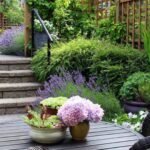Best Plants for Shady Areas
Creating a vibrant garden in shady areas can be a challenge, but with the right plants, you can transform low-light spaces into lush and thriving gardens. Whether your garden is shaded by trees, buildings, or other structures, choosing plants that thrive in such conditions is key to success. In this guide, we’ll explore some of the best plants for shady areas, helping you create a beautiful and green oasis even where sunlight is limited.
Understanding Plants for Shady Areas
Plants for shady areas are adapted to thrive with minimal direct sunlight. These species often have larger leaves to capture more light or are tolerant of lower light levels compared to sun-loving plants. Choosing the right plants ensures your garden remains healthy and vibrant despite the lack of direct sunlight.

Benefits of Plants for Shady Areas
Plants suited for shade not only thrive in low-light conditions but also provide cooling effects and can create a tranquil atmosphere in your garden. They are often less prone to drying out compared to plants in sunny spots, making them easier to maintain with less water.
Top Plants for Shady Areas
Ferns (Polypodiopsida)
Ferns are excellent choices for shady gardens due to their lush foliage and low light requirements. They come in various sizes and textures, adding a touch of elegance to any shaded area.
Hostas (Hosta spp.)
Hostas are prized for their striking foliage and are known for thriving in shady conditions. They come in a range of colors and sizes, making them versatile for different garden designs.
Heuchera (Heuchera spp.)
Heuchera, also known as coral bells, offers colorful foliage that brightens up shady spots. They tolerate shade well and provide year-round interest with their evergreen leaves.
Astilbe (Astilbe spp.)
Astilbe produces feathery plumes of flowers in shades of white, pink, red, and purple, adding a splash of color to shady gardens. They prefer moist soil and partial shade.
Hellebores (Helleborus spp.)
Hellebores, or Lenten roses, bloom early in the spring with delicate flowers that can tolerate shade. They are drought-tolerant once established and provide winter interest with their evergreen foliage.
Planting Tips for Shady Gardens
When planting in shady areas, prepare the soil with organic matter to improve drainage and fertility. Mulch around plants to retain moisture and suppress weeds. Consider the mature size of plants to ensure they have enough space to grow without overcrowding.
Maintaining Your Shady Garden
Monitor soil moisture regularly, as plants in shady areas may require less water than those in sunny spots. Prune dead or damaged foliage as needed to promote air circulation and maintain plant health. Fertilize plants according to their specific needs to encourage healthy growth.
Conclusion
Creating a thriving garden in shady areas is achievable with careful selection of plants that thrive in low-light conditions. By choosing from a variety of shade-tolerant species such as ferns, hostas, heuchera, astilbe, and hellebores, you can create a lush and beautiful garden that enhances the atmosphere of any shaded space. Remember to provide adequate care by monitoring soil moisture, maintaining plant health, and enjoying the unique beauty that shade-loving plants bring to your outdoor environment.



